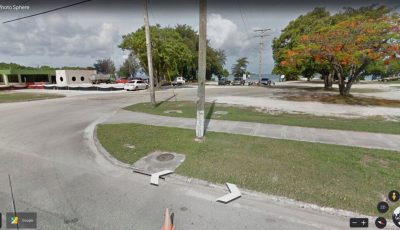MVA: Take part in Grotto survey
In the wake of reports that one of the CNMI’s most iconic tourist spots, the Grotto in Marpi, is being overwhelmed by the large number of tourists that visit it each day, the public and all stakeholders are being invited to take part in a survey that will look at the site’s capacity to accept visitors.
Marianas Visitors Authority executive director Chris Concepcion said the Grotto User Capacity survey will gather information for the purpose of protecting the Grotto’s unique features, determine the frequency of usage, and the impact of this usage on the environment.
“This survey will allow regulatory agencies to assess the situation at Grotto, better gauge the environmental impact tourism is having on the site, see what needs to be done to control access to the Grotto, and see what needs to be done to preserve the site for posterity,” said Concepcion.
The survey was released last week, under the auspices of the Department of Lands and Natural Resources, Bureau of Environmental and Coastal Quality, and MVA.
The Grotto, also called the Blue Grotto of Saipan, is a collapsed limestone cavern filled with turquoise blue water and is famous as a dive and snorkeling spot.
According to Concepcion the site has an average of 17,000 to 30,000 visitors a month.
“So that averages about 566 to 1,000 visitors daily,” he said. “It’s hard to tell what amount is enough or too much, given the lack of historical data for this particular site. We’ll leave that to the environmental experts to determine.”
The MVA does have design plans for the renovation and rehabilitation of the Grotto staircase, lookout, restrooms, and pavilions.
“However, funding is our issue,” Concepcion said. “With the [budget] cuts the Legislature is proposing [for MVA], we will not be able to afford this project. If DLNR decides to implement a fee, this fee should go toward this project.”
He deems it reasonable if DLNR decides to charge a small fee, like $2 to $5 per person to descend the Grotto stairs.
“This will make it easier for our tourism industry stakeholders to swallow and accept. And it’ll make Grotto a special site, one that you must pay to see firsthand, one that’s worth paying money to see,” he said.
“On the other hand, we must make sure that these funds collected by DLNR go strictly toward the maintenance, preservation, and security of the site. Right now, this falls on the MVA to fund, which is unfair in my opinion, since we have no rights to the site whatsoever. The place needs some rehabilitation but the MVA cannot fund it alone with the cuts the Legislature is making to the MVA budget,” he added.
Aside from the Grotto, Concepcion said the public should also be concerned about Managaha Island.
“I’m told Managaha receives up to 1,500 visitors on a daily basis. This inevitably has some impact on the marine life and the island itself so the MVA is naturally concerned. [The Department of Public Lands] has jurisdiction over this site so they should have accurate numbers.”
“I think a limit of 1,000 visitors a day is reasonable. It’ll allow the island to recuperate from the impact it receives every day. And we feel a reasonable increase in the landing fee charged by DPL is long overdue,” he added.
He said the MVA cannot over-emphasize the importance of the Grotto capacity survey.
“We encourage the public to take the survey; let your opinions be heard. We need community input to ensure we incorporate all our concerns. Share those thoughts with the appropriate authorities and come up with a plan on how to handle the situation better,” Concepcion said.
“The MVA will continue to do our mission of growing the tourism industry in a responsible manner in order to allow a better standard of living for our Commonwealth. We need everyone else to pitch in and do their part to contribute to the success of the tourism industry as a whole,” he added.
MVA is currently continuing its educational outreach via the Visitors Channel, through guidebooks, through the Tour Guide Certification Program, and through offshore offices in Japan, Korea, China, Taiwan, and Russia.



























